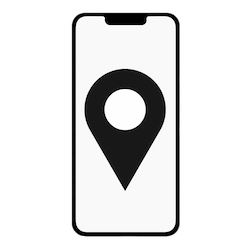When Is It Too Late to Get a Lawyer for a Car Accident?
Victims often grapple with medical, financial, and emotional challenges in the aftermath of a car accident. While many consider obtaining legal representation to help navigate the process, they frequently wonder: “When is it too late to get a lawyer for a car accident?” This article delves into the timelines, benefits, and potential pitfalls of seeking legal representation post-accident.
Understanding the Statute of Limitations
At the heart of the question is the “statute of limitations.” This legal term refers to the timeframe for a person to file a lawsuit. Each state has its defined window for various legal actions, which differ for personal injury claims stemming from car accidents.

For example:
- California gives accident victims two years from the date of the injury to file a personal injury lawsuit.
- New York also allows two years for car accident injury claims but three years for property damage claims.
- Texas provides a two-year window for personal injury and property damage lawsuits after a car crash.
Thus, while specifics vary by state, a common theme is clear: there is a finite period post-accident to initiate legal proceedings.
Why Act Sooner Rather Than Later?
Although the statute of limitations provides the ultimate deadline, there are compelling reasons to seek legal counsel soon after an accident:
- Evidence Preservation: Over time, evidence can become lost or degraded. Surveillance footage might be deleted, and witnesses might forget key details, and physical evidence at the accident scene could change. An attorney can help ensure that crucial evidence is preserved.
- Accurate Claim Evaluation: A lawyer can assess the accident’s circumstances, guide victims on the potential value of their claim, and help avoid pitfalls like accepting a lowball insurance offer.
- Medical Documentation: Legal representation can ensure that medical treatments and evaluations align with legal requirements, strengthening the compensation case.
- Insurance Negotiations: Insurance companies, motivated by profit, often aim to minimize payouts. A seasoned attorney can navigate these negotiations, ensuring fair compensation for the victim.
Are There Exceptions to the Statute of Limitations?
Yes, certain situations might extend or shorten the timeline:
- Minor Victims: Many states extend the filing deadline for individuals injured as minors until they reach the age of majority.
- Discovery Rule: If an injury isn’t immediately apparent post-accident, some states allow the statute of limitations to start from when the injury was discovered or reasonably should have been discovered.
- Defendant Absence: If the at-fault party leaves the state after the accident but before a lawsuit can be filed, the period of their absence might not count against the statute of limitations.
Potential Pitfalls of Waiting
Apart from losing the right to sue, waiting too long can have other drawbacks:
- Legal Complexity: The longer one waits, the more convoluted the legal landscape might become, potentially introducing issues that make a claim harder to pursue.
- Diminished Credibility: Courts or insurance adjusters might view a significant delay in seeking legal action or medical treatment with suspicion, potentially impacting the claim’s perceived validity.
- Emotional Toll: Prolonging the legal process can extend the period of uncertainty and stress for victims, hindering their emotional recovery.
Conclusion
While the statute of limitations defines the ultimate deadline for seeking legal action after a car accident, it’s in the victim’s best interest to pursue representation sooner rather than later. The complexities of legal processes and the challenges of evidence preservation and insurance negotiations make early attorney involvement invaluable. For those uncertain about their rights or the value of their claim, a timely consultation with an experienced car accident lawyer can provide clarity and direction, offering the best chance at fair compensation.
